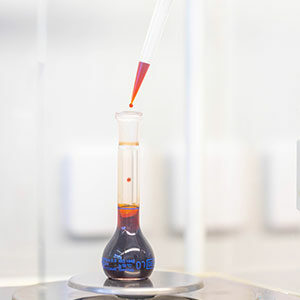Cleaning Validation
Cleaning of production facilities demands a high degree of interdisciplinary know-how and serves to eliminate residues of active substances, cleaning agents and possible degradation products. Cleaning validation serves as documented proof that the specified cleaning procedure leads to the desired success in a reproducible manner.
This ensures the safety of the downstream products – especially in multi-product plants. Depending on the required detection limits, we can support you with a wide range of equipment to ensure the safety of your cleaning process.
Criteria and worst-case approach
In order to avoid cross-contamination, ICH Q9 defines the acceptance criteria for each individual active ingredient produced in a multi-purpose plant on a risk basis.
Once the relevant limits are known, a worst-case scenario can be determined for the entire product range in order to set a limit for the entire cleaning validation. Costs and effort can be minimized by forming apparatus and product groups. For this purpose, it is recommended to evaluate the drugs with the highest toxicity, lowest solubility or properties that make them difficult to clean. Also an evaluation of the plant locations that are most difficult to clean is provided.

Test methods
Choosing an appropriate test method can be a challenge:
Advantages Rinse Test
- Large surfaces can be sampled
Disadvantages Rinse test
- Substance to be detected is highly diluted
Advantages Swab Test
- Suitable for residues that are difficult to dissolve
- Result can be detected at a defined location
Disadvantages Swab test
- Does not cover the entire surface – critical areas often difficult to access
- Low reproducibility
Our Service
Overall, developing a suitable method for cleaning validation is a costly and time-consuming, but necessary process. Reference Analytics has made it its business to support you in this process.
We offer flexible sample analytics tailored to your cleaning validation projects including:
Method development:
- Conceptual design and optimization of sampling
- Analysis and qualification of sampling by factory staff (incl. training)
- Development of customized sample preparation
- Development and optimization of a highly sensitive and highly selective analytical method
Methods
Depending on the required detection limits, we can support you with a wide range of equipment to ensure the safety of your purification process: GC/HPLC/LC-MS/MS.
